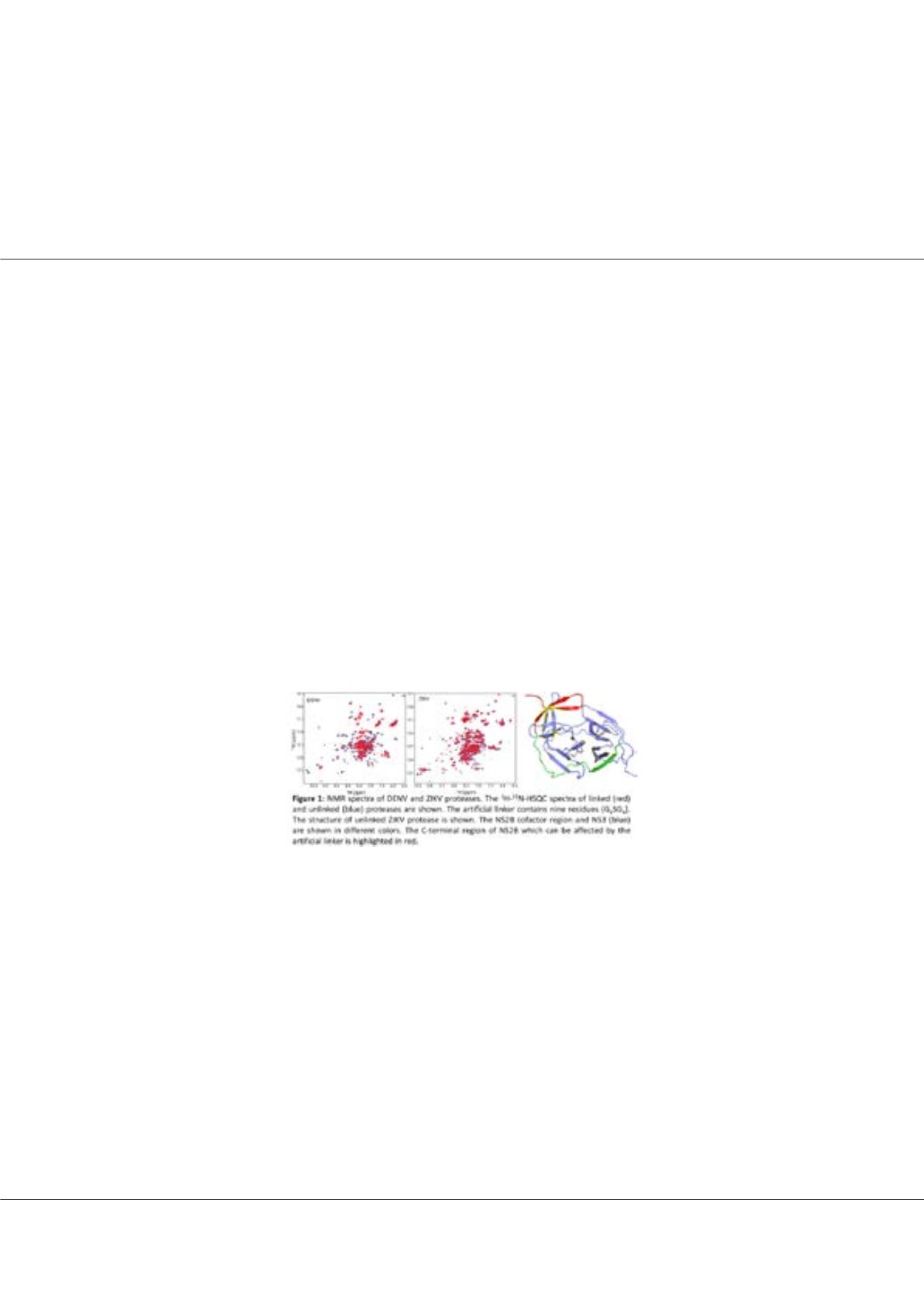

Page 130
Notes:
conferenceseries
.com
Volume 10, Issue 8 (Suppl)
J Proteomics Bioinform, an open access journal
ISSN: 0974-276X
Structural Biology 2017
September 18-20, 2017
9
th
International Conference on
Structural Biology
September 18-20, 2017 Zurich, Switzerland
CongBao Kang, J Proteomics Bioinform 2017, 10:8(Suppl)
DOI: 10.4172/0974-276X-C1-0100
Structural and dynamic studies of DENV and ZIKV proteases and its insight into inhibitor design
CongBao Kang
Agency for Science, Technology and Research, Singapore
D
engue virus (DENV and Zika virus (ZIKV) belong to
Flaviviridae
family which contains important human pathogens.
DENV affects people living in tropical and subtropical regions. DENV infection can cause serious diseases such as dengue
fever. ZIKV has drawn worldwide attention because of the outbreak in 2015. Viral genome of a
flavivirus
encodes a polyprotein
that can be processed into structural and non-structural (NS) proteins by both host and viral proteases. Viral protease is a
two-component serine protease formed by a cofactor region (~40 aa) from NS2B and a protease region (~170 aa) from NS3.
The NS2B-NS3 protease of DENV or ZIKV is a validated target because of their function in maturation of viral proteins.
Structural studies have been conducted for both DENV and ZIKV proteases. For DENV, previous studies have demonstrated
that the free protease adopts an open conformation in which the C-terminal part of the NS2B cofactor region stays away
from the active site. In the presence of an inhibitor, DENV protease forms a closed conformation in which the C-terminal
region of NS2B forms part of the active site and interacts with the inhibitor. Our NMR study reveals that an unlinked DENV
protease adopts the closed conformation in solution. Based on the knowledge on DENV protease, several constructs were
made for ZIKV protease. Structural studies demonstrated that ZIKV protease adopts the closed conformation in the absence
and presence of an inhibitor or substrate. The linker or enzymatic cleavage site present between NS2B and NS3 may affect
inhibitor to interact with the active site. Our accumulated studies have shown that the unlinked protease construct can be used
for studying protease-inhibitor interactions. We have demonstrated that the unlinked ZIKV protease interacts with different
types of inhibitors. Our studies will be helpful for structure-based inhibitor design against both ZIKV and DENV proteases.
Biography
CongBao Kang received his PhD from School of Biological Sciences at Nanyang Technological University (NTU). He was a Research Fellow at Centre for Structural
Biology, Vanderbilt University, where he was working on structural determination of disease-related membrane proteins. He is currently the group leader of high End
NMR group at ETC. His group is working on protein structure, dynamics and its interaction with potential drug candidates using solution NMR spectroscopy. The
goal of his group is to provide structural information of a target protein to the medicine chemists to understand structure-activity relationship of potent compounds.
His group is involving in hits identification, hits to lead, and lead optimization steps of the drug discovery process. His is currently working on target-based drug
discoveries. The targets include methyltransferases, kinases, ion channels, membrane-bound receptors, protein-protein interactions, and viral proteins.
cbkang@etc.a-star.edu.sg

















